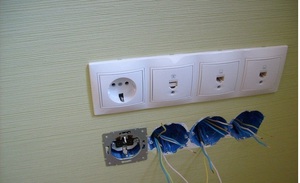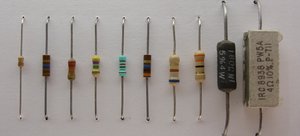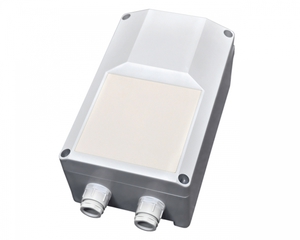Do-it-yourself car battery charger: schemes of manufacturing various devices
Definitely, every motorist faced the problem of a discharged battery. Sometimes the battery is discharged in the most unexpected situations, example, when the driver is going to work and in a hurry, so as not to be late. At such moments, a discharged battery can lead to unpleasant consequences.
In order to avoid such situations, many motorists resort to special devices, which allow you to charge the car battery. Such chargers can be easily purchased in specialty stores or markets. The range is wide, prices are different.
But many motorists have at least once thought about making a charger for their batteries with their own hands. And there really is such a possibility. Essentially, each user can assemble such a device on their own, spending except on the components of the whole device. Besides, using all necessary schemes and instructions, any car enthusiast can make a charger for his car battery with his own hands, especially if he already has some experience with electrical engineering.
Simple charger on the LM317 chip
To begin with, you can imagine the option of creating a charger on the LM137 chip, which is a linear voltage stabilizer, able to regulate the output voltage. This option can be called one of the simplest, as the device of such self-made charging is not difficult, which allows the user to make it without any problems.
In this version of the device will be involved as many as two stabilizers. This is done for that, that one of these two stabilizers was connected according to the circuit of the current stabilizer, while on the second the threshold knot should be assembled.
scheme
Presented above ??the scheme of such a charger. You can see it, that resistors R2 and R3, by means of which it is possible to expose necessary to the user voltage on an exit, replaced here by a variable resistor. This is done for easier adjustment. The battery will be fully charged at that time, when the voltage on the battery itself is equal to the charging voltage of the device.
The maximum allowable value of the current charge is equal to 1,5 Ampere. Despite the supposed weakness, this value of the charger is enough to charge the batteries. Obtained by the device will be able to charge uninterruptible power supplies, batteries for motorcycles and cars. In the case of the latter, the charging process will be quite long, but it must be admitted, that the version of such a self-made charger is very working and can, undoubtedly, come in handy.
In that case, if the current from the charger is more 500 mA, then the chip is recommended to be installed on the heat sink.
Powerful battery charger
The above is a very simple version of a homemade car battery charger, weak, but permissible. A version of one of the most powerful devices will now be presented, which can be done with your own hands. The current of such a device will be equal to 50 Ampere, and output power - 350-600 watts on average.
scheme
The scheme of such a device is quite simple. The well-known IR253 is taken as a basis, which will perform the functions, that sets. She will control the two power keys. It is recommended to use powerful N-channel high-voltage field-effect transistors.
As you can see, the block diagram is a half-bridge. Voltage is applied to the rectifier to the extension cord. A thermistor is used to limit the starting current, having a rated current 5 Ampere and resistance 5 Ohm. Film capacitors and chokes act as a line filter to smooth out interference and network ripples.
As a bridge rectifier you can take a ready-made bridge, but at the same time you can assemble it from four separate diodes. In both cases, the bridge must be designed for electricity 6-10 and voltage 600-1000 Volt (recommended values). It will be very convenient to use ready-made diode assemblies, already available on computer power supplies.
Half-bridge electrolytes have an effective capacity 330-470 uF and operating voltage, which is 200-250 Volt. If the power of the unit is higher, than the allowable values, then you should increase the capacity of the above capacitors, which, by the way, can also be found in the power supplies of personal computers. There you can also find a ready-made transformer, which will not require rewinding.
Power transistors can be installed or on a common heat sink, or on individual. By the way, in that case, if the user decides to connect power transistors to the common heat sink, then you will have to pre-isolate its keys, to avoid the possibility of a short circuit.
It is recommended to install the chip on a special platform during assembly. This is done to easily replace the chips in that case, if it suddenly fails. The device will not be affected by mains voltage drops, which guarantees its stable operation without any failures and noise.
You need to remember that moment, that at idle the transistors must be cold, even icy. Otherwise, it could mean an error in the installation or some component of the assembly does not work.
As a diode rectifier at the output of the device it is recommended to use fast, pulsed or ultrafast diodes with high current (it 30 Ampere), Schottky diode assemblies can also be used, operating at high power. In the case of this device, it is better not to use conventional rectifiers 50 Hz, since the output of the circuit is a high frequency voltage.
- Attention should be focused on that, that this unit is not equipped with protection against possible short circuits, therefore, do not short the output wires, as otherwise the circuit may fail and fail.
The whole scheme is quite compact and light, which may please not the most experienced users, who do not have certain skills and extensive experience in this field. Having a scheme will be able to help in this matter.
Pulse battery charger
You can consider the option of making a pulse charger. The principle of creating such a device is, that you should just replace the transformer power supply with a switching one. This is a fairly compact and lightweight charger, which will be discussed in detail below. Switching power supply is made using the chip IR2153.
This scheme differs from its other counterparts, that in this case instead of two capacitors, which are connected to the midpoint, only one electrolyte is used after the diode bridge.
scheme
This version of the charger is designed for relatively low power, which in principle can be corrected, if you replace some components with more powerful ones. As a result, you can create a more powerful device.
The keys of the 8N50 series can be used in this scheme. These keys are equipped with an insulated housing, so in the case of general heat dissipation, you can not worry about mica gaskets, as they can not be used at all.
Diode bridges, again, can be taken from power supplies from ordinary personal computers, and you can assemble it with their four rectifier diodes.
Then you can remember the power supply circuit of the chip. Food can be taken during the break, current quenching resistor on 18 kOhm. After the resistor there is a simple rectifier on a single diode and the power goes directly to the chip. On the power supply is also an electrolyte with a parallel connected ceramic or film capacitor, which is done for the best smoothing of obstacles and pulsations.
- By the way, and the power transformer can also be taken from a computer power supply. It is just perfect for such purposes, as it provides a decent current at the output and provides several output voltages.
The output rectifier diodes must be pulsed, as ordinary ones will not be able to work due to the increased frequency. You can not set the mains filter, although a couple of tanks and a choke, representing a filter, desirable for installation. To reduce the throws at the input of the filter, you can use a thermistor Ohm on 5, easy to remove from the computer power supply.
Electrolytic capacitor is selected based on a special ratio 1 Watt - 1 uF. The voltage of such a capacitor must be equal to 400 volt.
This is a fairly simple scheme, which can be performed even by the user, inexperienced. In addition, in the presence of the necessary schemes and tips for creating such a device, you can handle without much trouble.



